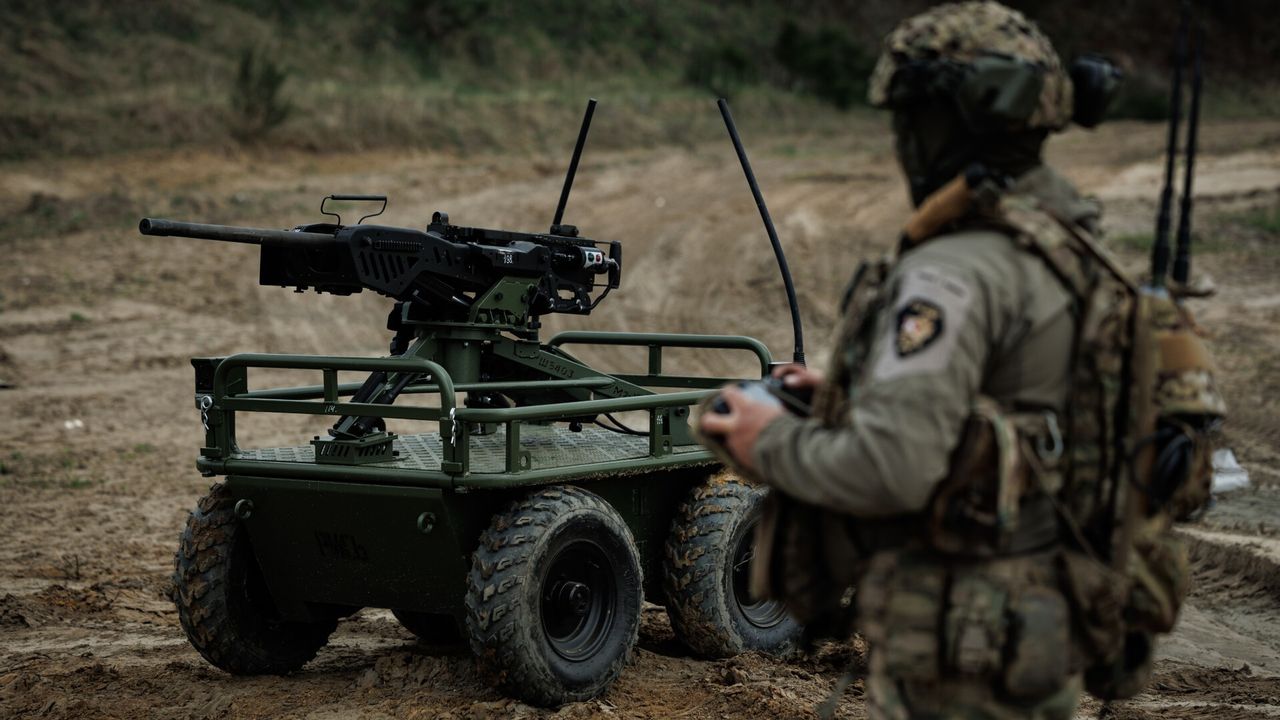The bandwidth limitations of SpaceX’s Starlink internet service are hindering Ukraine’s ability to effectively deploy combat robots on the front lines of its ongoing conflict with Russia. As the war progresses, Ukrainian innovators are exploring alternative solutions to enhance the operational capacity of unmanned ground vehicles (UGVs), which have become vital for supply delivery, evacuation, and, in some cases, direct engagement with enemy forces.
Over the past year, Ukraine has introduced thousands of wheeled ground robots to assist its military. These UGVs are essential for ensuring the safety of personnel by performing critical tasks without putting soldiers at risk. However, the bandwidth provided by Starlink terminals often limits these robots to a connectivity speed of just 10 megabits per second. This low bandwidth severely impacts the quality of video feeds essential for controlling the UGVs in real time.
Vadym Burukin, the CEO of drone start-up Huless, highlighted the challenges posed by this limitation. “If you want to drive fast, you need a frame rate of at least 30 frames per second to control the robot,” he stated. “With only ten frames per second, the risk of running into a minefield or colliding with obstacles increases significantly.”
The Starlink megaconstellation has proven indispensable for Ukraine since the early stages of the conflict. As reported by sources linked to the Ukrainian Ministry of Defense, approximately 200,000 Starlink terminals are currently operational in Ukraine, making it the largest user of Starlink services in Europe. However, the dense concentration of devices, especially near the front lines, results in limited operational speed for the robots, averaging only about 6 miles per hour (10 kilometers). This slow pace can extend the time required to traverse crucial areas, such as the 12-mile-wide (20-kilometer) grey zone, where both personnel and equipment face imminent threats from Russian drones.
Andriy Dovbenko, CEO of the Ukrainian Tech Exchange network, emphasized the need for faster UGV speeds. “You want to have at least 20 kilometers per hour (24 miles),” he said, stressing that the current limitations impede mission effectiveness.
In light of these challenges, Ukrainian tech innovators are actively pursuing alternatives to enhance robot performance. One promising solution involves the development of tethered drones that can operate at an elevation of 500 feet (150 meters). These drones carry signal repeaters to amplify weak radio signals, significantly extending their operational range. Burukin explained, “For ground-to-ground communication, the radio signal range is just a couple of kilometers. With a repeater in the air, this range can extend to over 40 kilometers (25 miles).”
Additionally, flying drones equipped with airborne repeaters can achieve distances of up to 48 miles (80 kilometers) from their controllers, enabling Ukrainian forces to conduct exploratory missions deeper into Russian-controlled territory while maintaining reliable communication. Burukin recounted a recent success, stating, “We were able to reach the Donbas arena, a major stadium in the center of Donetsk, using our repeating equipment.”
Despite these advancements, Starlink remains a critical resource for the Ukrainian military. Dovbenko noted, “There are many uses for Starlink in the war, but it was not designed specifically as a military technology, so it has its limitations.” He questioned whether viable alternatives could be developed at scale, acknowledging the challenges involved.
To further mitigate the impact of signal disruptions, Ukrainian forces are integrating AI-powered autonomous navigation systems into their military robots. These systems are designed to enable the UGVs to operate independently of real-time human control, thereby reducing vulnerability to radio jamming and Starlink signal loss. While it is unlikely that autonomous machines will entirely replace human soldiers, they will play a crucial role in minimizing personnel exposure in high-risk areas along the frontline.
As the conflict continues, the integration of innovative technologies will be essential to enhancing Ukraine’s military capabilities and ensuring the safety of its troops on the battlefield.







